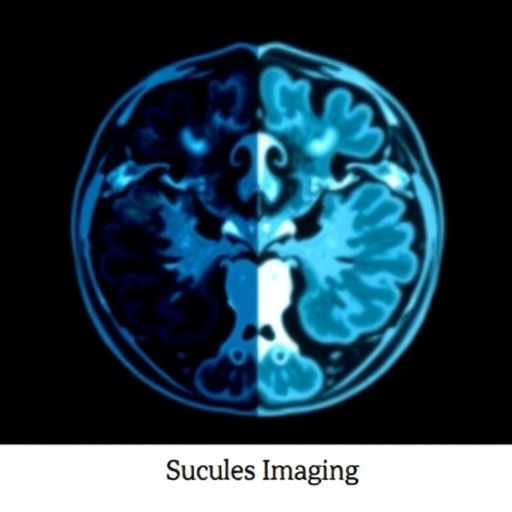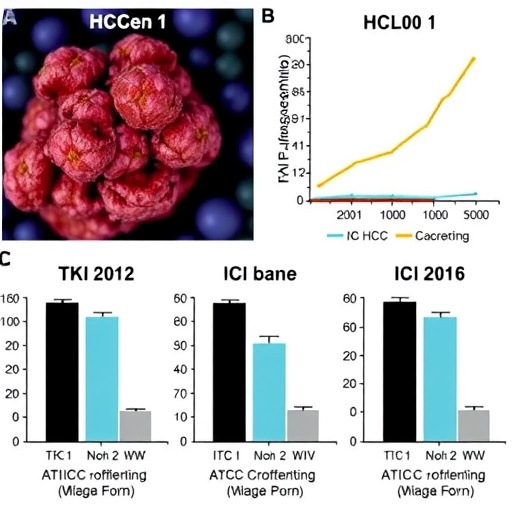In recent years, cervical cancer has remained a focal point of oncology research, largely due to the remarkable progress made in prevention and early detection methods. Routine Pap smear screening and the widespread adoption of the HPV vaccine have dramatically improved survival rates, pushing cervical cancer into a category of malignancies with some of the highest curative potentials when caught early. However, groundbreaking new research from the MUSC Hollings Cancer Center reveals an under-recognized long-term risk for women who have successfully overcome cervical cancer: a significantly increased incidence of anal cancer. This emerging concern provides a compelling case for revisiting and potentially revising existing cancer screening protocols to better protect survivors.
The research, spearheaded by Drs. Haluk Damgacioglu and Ashish Deshmukh, utilizes rigorous population-based data from the National Cancer Institute’s SEER (Surveillance, Epidemiology, and End Results) program. Over twenty years, the incidence of anal cancer was studied among a cohort exceeding 85,000 women who had previously been diagnosed with cervical cancer. What emerged from their comprehensive data analysis was a striking finding: women with a history of cervical cancer bear almost double the risk of developing anal cancer compared to their counterparts in the general population. This revelation challenges the current medical paradigm, which largely overlooks routine anal cancer screening for this vulnerable group.
At the molecular level, the shared etiological factor between cervical and anal cancers is the human papillomavirus (HPV), a pathogen well-known for its oncogenic potential. Both malignancies originate from HPV-infected epithelial tissues, yet clinical strategies have traditionally addressed these cancers independently. Dr. Deshmukh emphasizes that although the causative link through HPV has been understood for years, the natural history connecting cervical cancer survivorship to an elevated anal cancer risk over time has remained insufficiently elucidated. This gap in knowledge has, until now, left clinical guidelines static and ill-prepared to prevent subsequent malignancies in this demographic.
A critical challenge addressed by the study is the latency period characteristic of HPV-related carcinogenesis. HPV often integrates into the host genome and initiates neoplastic transformations that can take a decade or more to manifest as invasive cancer. This latent period complicates early detection, making the timing of surveillance efforts paramount. The researchers observed that anal cancer incidence not only remains elevated but actually increases with age in women with prior cervical cancer. Particularly, women aged between 65 and 74, who are more than 15 years post their initial cervical cancer diagnosis, showed the highest rates of anal cancer diagnoses. This finding underscores the insidious nature of HPV-mediated oncogenesis and accentuates the need for extended surveillance protocols well beyond the immediate survivorship phase.
Current recommendations for anal cancer screening prioritize populations at elevated risk due to factors such as HIV infection, immunosuppression post-organ transplantation, and a history of vulvar cancer. Surprisingly, women with previous cervical cancer—despite their demonstrated susceptibility—are not currently included in these guidelines. This omission stems partly from a historical paucity of robust epidemiological data and the logistical challenges surrounding anal cancer detection methods. Screening techniques encompass anal cytology, a procedure similar to cervical Pap smears, and high-resolution anoscopy for direct visualization of the anal canal, yet widespread availability and provider expertise remain limited.
The MUSC team’s findings shed light on a compelling public health question: given the demonstrated risk, should anal cancer screening be incorporated into post-cervical cancer follow-up care? Dr. Damgacioglu asserts that the data appreciably exceed accepted thresholds that typically mandate routine screening interventions. However, equitable implementation requires addressing the current systemic shortcomings in specialist availability and public awareness, factors that impede the translation of research findings into clinical practice. Additionally, prioritization strategies must be developed to allocate finite resources efficiently and screen those at highest risk.
The study’s methodology deserves particular scrutiny, given its reliance on SEER data—a gold standard in epidemiological cancer research. SEER’s comprehensive registries capture demographic, clinical, and survival information across diverse populations in the United States, enabling longitudinal analysis with minimal biases. By leveraging this robust database, the researchers could confidently stratify anal cancer incidence by age and latency since cervical cancer diagnosis, thereby producing nuanced risk estimates that inform screening timing. Such data-driven insight stands to influence guidelines profoundly, shifting recommendations from theoretical to evidence-based frameworks.
Further compounding the urgency of the study’s implications is the often asymptomatic progression of anal cancer during early stages. Without intentional screening, diagnosis frequently occurs at advanced stages, complicating treatment and diminishing prognosis. Incorporating anal cancer surveillance into survivorship care pathways could facilitate earlier detection, improve patient outcomes, and ultimately reduce morbidity and mortality related to HPV-driven malignancies. It also aligns with a broader movement toward personalized, risk-adapted oncology care.
Building on these pivotal findings, Dr. Deshmukh and collaborators have initiated a newly funded project harboring the objective of optimizing screening strategies for this high-risk population. In collaboration with prestigious institutions such as MD Anderson Cancer Center and the Icahn School of Medicine at Mount Sinai, the team aims to evaluate screening modalities, intervals, and implementation logistics. Such translational research embodies the continuum from epidemiological discovery to clinical application, promising to refine protocols that enhance patient care and resource stewardship in oncology.
Beyond the clinical domain, the study accentuates the broader importance of considering survivorship as a dynamic phase of oncological care. Long-term cancer survivors face unique challenges, including the risk of secondary malignancies that may arise due to shared etiological factors or consequences of initial treatment. Recognizing and addressing these risks through proactive surveillance is essential to improving quality of life and overall survival in this growing patient population.
In conclusion, new evidence illuminates the critical need to integrate anal cancer screening into post-cervical cancer care, particularly for older women many years after their initial diagnosis. The data reveal a persistent and escalating risk that current clinical guidelines have yet to address adequately. Advancing this discourse invites substantial changes in cancer survivorship care policies and clinical practice, underscoring the ever-evolving landscape of oncology driven by rigorous research and patient-centered innovation. By prioritizing high-risk groups and harnessing emerging screening technologies, the medical community can safeguard survivors from preventable cancers once deemed unrelated, transforming long-term survivorship into a reality of sustained health.
Subject of Research: People
Article Title: Anal cancer incidence among women with a history of cervical cancer by age and time since diagnosis
News Publication Date: 11-Sep-2025
Web References:
http://dx.doi.org/10.1001/jamanetworkopen.2025.31362
Image Credits: Medical University of South Carolina
Keywords: Cervical cancer, Cancer, Cancer risk, Cancer screening




